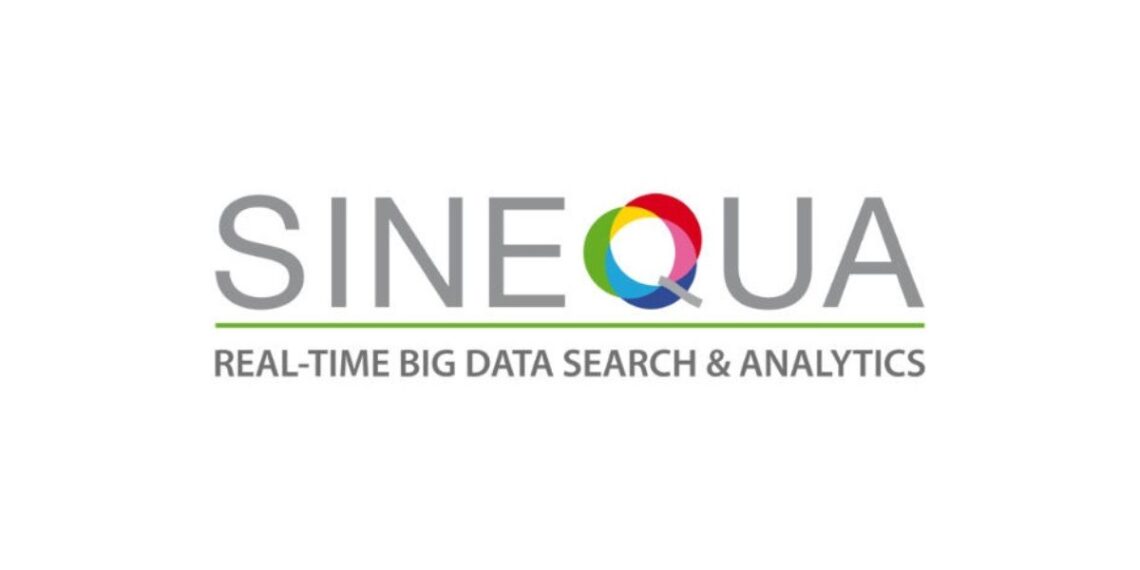Ever tried to find a crucial doc, email, or product spec in your startup’s sea of Google Drive folders, Notion pages, Jira tickets, and Slack chats… and just ended up more frustrated and lost? It’s the “hidden knowledge” nightmare: information exists, but it’s scattered and nobody—founder, engineer, or ops lead—can actually find what they need, when they need it. At scale, this costs teams speed, focus, and can even kill innovation. 🕵️♂️💥That’s the big, hairy problem Sinequa was built to solve—but for the Fortune 500, not for your three-person growth hack pod.
In this founder’s review, we break down what Sinequa actually is, how it works (and for whom), what it costs, its pros and cons, alternatives, and whether a savvy startup should even consider an enterprise AI insight engine like this. If you’re scaling and want the full story—without the sales fluff—read on. 👇
Sinequa Overview
At its core, Sinequa is like Google for all your company’s knowledge—emails, PDFs, docs, internal wikis, databases, legacy systems, you name it—but with AI brains designed for the biggest, messiest data problems on earth. Born in France and now serving global enterprises (think: pharma giants, major banks, government agencies), Sinequa brings deep AI-powered search, natural language processing, and knowledge graph tech to make sense of sprawling, complex organizational data.
Imagine: your R&D team asks a natural-language question—“Which of our chemical compounds interact with compound X in clinical trials?”—and Sinequa not only finds the answer, but connects related patents, team expertise, recent research across languages, and more. For the world’s largest, most siloed organizations, this is a gamechanger. For startups? Well… we’ll get to that. 💡🚀

Key Features of Sinequa
If you dropped Sinequa into a high-growth startup, here’s what you (hypothetically) could use, founder-style:
🔗 Epic Connectivity
Connects to 200+ data sources: SharePoint, Salesforce, cloud blobs, legacy databases, email, Slack, and niche industry tools. Perfect if your startup already lives in 20+ SaaS tools… but honestly, most early-stage teams don’t.
🧠 Deep AI + NLP Processing
Goes way beyond keyword search. Sinequa reads docs with AI to understand meaning, extract people, company names, patent numbers, code snippets, biological terms, financial data, etc. Knows the difference between “Apple” the company and “apple” the fruit—hugely valuable for domain-specific search.
🌐 Multiple Language Support
Automatically detects and processes dozens of languages. If your team is international, that’s handy—though honestly, most startups can get by with English + a couple more for awhile.
🔍 Semantic Search
Users can type questions in natural language (“Which leads churned after v3.2 launch?”) and get context-specific, relevant answers (not just doc lists).
🕸️ Knowledge Graph Visualization
Fancy graphs show connections between people, projects, technologies, and events—ideal for spotting hidden patterns (“Who’s our IP expert on XYZ tech?”).
🛠️ Custom Insight Apps
No generic “one search bar fits all.” You can build internal apps tailored for sales, support, R&D, etc., layering in search, dashboards, and visualizations customized for each role.
🔒 Enterprise-Grade Security
Integrates with SSO, respects all your granular data permissions (so your junior dev doesn’t see the board deck by mistake). This is non-negotiable for regulated industries—less dire for scrappy startups.
⚡ Scalable, Cloud or Hybrid
Deploy Sinequa on-prem, in your AWS/Azure/GCP cloud, or as a SaaS (“Sinequa Search Cloud”). Future-proofs you if you’re racing from 20 to 2,000+ staff.
🎛️ Smart Administration Tools
Get analytics, system monitoring, and full control over tuning AI behaviour, connectors, and indexing pipelines—think “admin heaven” (if you’re an IT pro).

Sinequa Pros and Cons
Before you dream of AI-powered knowledge Nirvana, here’s the founder-to-founder truth:
👍 Sinequa Pros:
- Solves big findability and knowledge-sharing headaches for complex, multi-source organizations.
- Advanced AI/NLP for understanding documents, relationships, and industry-specific jargon (huge in biotech, fintech, etc).
- Scales to billions of files, petabyte datasets, and global teams.
- Extreme security—document-level access, full compliance, SSO baked in.
- Custom insight apps: tailor the experience for your functions, not “just search.”
- Can reveal non-obvious connections (goodbye, duplicated R&D).
👎 Sinequa Cons:
- Costs are firmly “Fortune 500” scale (think six to seven figures/year).
- Implementation = months (sometimes a year+) and requires expert IT, not a weekend hack.
- Steep learning curve for customization, onboarding, and maintenance (you’ll need dedicated staff).
- Heavy infrastructure footprint—not for teams running lean.
- No free plan, no plug-and-play self-serve trial.
- Overkill for lean, early-stage teams (too much tool, too steep a ramp).
- Vendor lock-in: deep integrations make it painful to switch later.
- ROI is hard to quantify for smaller orgs—“time saved” is real but can be fuzzy on a $ scale.
Considering Sinequa for Startups
Deciding on Sinequa (or any big insight engine) isn’t just a tech choice—it’s a strategic call tied to team size, budgets, pain points, and future scale. Here’s your founder-cheat-sheet:
📊 Are you drowning in complex, siloed data?
Sinequa shines for orgs with sprawling data (legal, R&D, ops, financials, etc.) scattered across systems. If your knowledge problem is “searching Google Drive sucks,” this is too much.
💰 Is your budget measured in millions, not bootstrapped dollars?
If annual SaaS spend is a boardroom worry, Sinequa’s price tag will raise eyebrows. Customer profiles are pharma giants, banks, governments.
🔗 Do you NEED to unify data from 10+ enterprise platforms?
If your “tech stack” = Google Docs, Slack, and Stripe, this is overkill. If you already face big integration hell, maybe—if you have funding.
👥 How big is your team, and how fast is it growing?
Designed for hundreds (or thousands) of users. Three co-founders and two engineers? Nope. 500+ people and growing? Now it’s relevant.
🧬 Are you in a deeply regulated or data-heavy field?
Pharma, finance, aerospace, energy: if compliance and deep search matter (and you have the $), this is legitimate. SaaS, consumer, or “move-fast-break-things” markets? Probably not.
🛠️ Do you have internal IT/data science firepower?
Sinequa installs aren’t ‘set-and-forget.’ Success requires admins, data engineers, knowledge managers. Lean teams will struggle.
⏳ Can you wait months for rollout (vs. days for a SaaS trial)?
Time-to-value is slower but worth it—if you’re solving a “big company” problem.
⏱️ Would you benefit most from deep custom search or simple Google-like search?
If “search” for you means surfacing last week’s pitch deck, don’t over-architect. If it means mapping relationships across 12 data systems, maybe it’s time.
Sinequa Plans and Pricing
Let’s be real: Sinequa doesn’t publish public pricing—and with good reason. Everything is custom-quoted. There’s no free plan or startup/SMB pricing. Here’s a realistic founder-facing table for context:
| Plan | Monthly Price (Annually Billed) | Usage Limit | Key Features |
| Sinequa Search Cloud | Custom ($K+) | Scale by data/users | Cloud/SaaS, full AI insight engine |
| Enterprise On-Premises | Custom ($K–$M) | By contract | Full on-prem, hybrid deployments, full connectors |
| Proof-of-Concept (POC) | Negotiated, partial fee | Limited users/data, months | Pilot for demo purposes, limited time/use |
| Academic/Research | By inquiry (special terms) | Non-commercial, limited | Possible academic pricing for universities |
Key facts:
- No free plans, no self-serve “starter” tier.
- Trials/POCs require sales and usually paid/professional services.
- All quotes are custom—based on number of data sources, users, features, and support.
- “Monthly” refers to annual contracts divided by 12 (billed annually).
Sinequa Startup Discount and Promo Info
Updating
Comparing Sinequa with Alternatives
Here’s how Sinequa stacks up to other big-name insight engines, with features founders care most about:
| 🧩 Feature | Sinequa | Elastic Enterprise Search | Microsoft Viva Topics/Syntex |
| 🎁 Free tier | None | Yes (basic self-serve tier) | Yes (with M365); Syntex/Viva paid |
| 🔌 API access | Full, robust enterprise APIs | Yes (dev-centric) | Limited; MS Graph, proprietary APIs |
| 🕸️ Knowledge Graphs | Built-in, advanced | Customizable; dev needed | Yes (Viva Topics auto-generates) |
| 🧠 NLP/AI capabilities | Deep, industry-specific NLP | Good NLP, less prebuilt verticals | Strong in M365 docs, less elsewhere |
| 🌍 Language support | 30+ languages | Multilingual (varies per plugin) | Focus on main global langs/M365 |
| ⚡ Integrations | 200+ connectors | Wide, open-source; BYO connector | M365, LinkedIn, few third-party |
| 🛠️ Setup speed | Months (enterprise project) | Hours to days (self-host or cloud) | Rapid if you’re all-in on Microsoft |
| 💰 Typical pricing | $100Ks+ annual (custom) | Free–mid-tier SaaS; $5K–100Ks+ | Add-on M365 SKUs; per user/month |
| 🎯 Best for | Hyper-complex, siloed orgs | Developers, mid/large teams | M365-centric orgs, knowledge mgmt |
FAQs
❓ Is it beginner-friendly?
Not in the traditional sense. Sinequa needs IT expertise—think knowledge managers or enterprise data engineers.
❓ What are the hidden costs?
Implementation, infrastructure, ongoing tuning/maintenance, and optional modules (NLP upgrades, industry packs) can add up fast.
❓ Can we trial it for free?
No free Self-Serve option. You can request a paid proof-of-concept, but it’s non-trivial.
❓ Does it integrate with startup SaaS stacks (Notion, Slack, etc.)?
Yes, if you build/buy the right connectors—Sinequa supports 200+ sources. For niche tools, you’ll need custom development.
❓ Will Sinequa slow us down?
Initial setup is slow and labor-intensive. But when deployed right—huge productivity gains for teams lost in data.
❓ How does it keep our data secure?
Enterprise-grade. Honors source system permissions, roles, SSO, fine-grained access, full audit.
❓ Can we customize its AI/NLP?
At a cost—Sinequa supports industry-specific AI, and you can bring your ontologies/dictionaries. This takes time, expert resources.
❓ Is this overkill for startups?
Usually, yes—unless you’re already a data-heavy, 200+ person company operating like a mini-enterprise.
Final Thoughts
Here’s the straight-up founder’s POV: Sinequa is a killer machine for enterprise knowledge problems—but it’s “aircraft carrier” class when most startups just need a fast boat. ✈️⛵
If you run a 10-person SaaS, Sinequa will eat your budget and slow your momentum. If you’re leading a fast-growing, well-funded, heavily regulated (think biotech, fintech, defense) startup and your information chaos is becoming an existential risk now, Sinequa can save your team hundreds of hours and drive meaningful insight at scale… but you must be ready for six-figure commitments, months-long onboarding, and enterprise-level staffing.
TL;DR for founders:
- Need robust, reliable, enterprise-grade search and knowledge management—right now, at scale, and with money to burn? Call Sinequa’s sales.
- Building lean, growing fast, and hate paying for more tool than you use? Use built-in Google Workspace/M365 search, Elastic (open-source/hosted), or Notion/Confluence search for now.
- Always make sure your tool fits your actual scale. Prioritize fast wins—save the Sinequas of the world for your future unicorn days.
Still curious? Book a Sinequa demo if you’ve outgrown one-size-fits-all search and your VC is cool with enterprise budgets. Otherwise, keep it lean and simple until your startup itself feels “enterprise.” 🦄🤝









